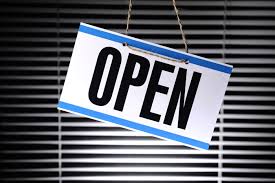
Imagine if I was trying to charge you a fee to read this blog.
I know, I know. You’re all just scrambling to pull out your wallets quickly enough!
But the sad truth is that a lot of really important information is hard, if not impossible, for the average person to get at. That’s because it’s blocked from you by a barrier of some sort, like a pay-wall, a bad internet connection, or a lack of being listed in the top 3 of your Google search results.
Anyways, Open-access (OA) content can be defined as author consenting, digital, free-of-charge/license restricted information.
It is closely tied to the notion of lessening the “digital divide”. I like to picture this as a big, dark chasm that only the strongest of the informations can soar over. Except, on the other side of the chasm are locked doors to which only a few of the exhausted survivors possess keys.
You may have noticed that I used information as a noun there! And while maybe it made you twitch or cringe, it’s true. Michael Buckland’s pivotal article on “Information as Thing” explains that information must manifest physically in some way, as a “signal, text or communication”, in order to be shared.
One important take away from all this is that telepathy would be cool.
The “digital divide” in developing countries
Since the United Nation’s declaration of their Millennium Development Goals in 2002, libraries have recognized a growing awareness within social policy that they are well positioned to act as “agents of socio-economic change” in developing countries (Holmner 140). It is vital that these nations have access to an environment in which they can create, transfer, access and apply knowledge (139-40).
The digital divide can be found in many different places. The ever-increasing cost of journals has been driven both by the commoditization of information, and by the commercial ownership of scholarly publications (Buschman 86).
And that, my friends, is why open access matters.
If the cost of People magazine had risen as fast as academic periodicals since 1990, it would currently cost $182 for a year-long subscription.
The paid subscription-based database, Journal Storage (JSTOR), denies over 150 million attempts to virtually access their articles and other primary information every single year. That is 150 million denied attempts to learn something about this world!
So, say you want to publish your work so that it’s freely accessible. You have a few options…
Choosing Open Access for Your Work- GREEN VS GOLD
Gold OA- This involves fully publishing your work in a fully accessible journal or website. You do not profit financially from granting open access to your work. Sometimes it is expensive to produce but this is often covered by a research grant or institutional fund.
Green OA– Self-produced. May enable you to share your work more widely across the internet. Considered risky, approach with caution!
It’s like choose your own adventure. You can go down the green path, or the gold path.
This is just a very basic introduction to open access principles. I have included a list of some further reading, in case you are interested in learning more.
Some Further Reading
– The American Library Association. “Quotable Facts about America’s Libraries Reference Book”. 2012. Accessed October 6 2013. http://www.ala.org/offices/sites/ala.org.offices/files/content/QF2012_annotatedFINAL_2.pdf
– Braman, S. “Defining Information: An Approach for Policymakers.” Telecommunications Policy 13(1991): 233-42.
– Buckland, M. “Information as Thing.” Journal of the American Society of Information Science” 42(1991):351-360.
– Buschman, J. (2003). Dismantling the public sphere: Situating and sustaining librarianship in the age of the new public philosophy. Westport, CT: Libraries Unlimited. (GRC Reserve) Read Introduction (pp. 3-13) and the public sphere: Rounding out the context of librarianship (pp. 37-53).
– Holmner, Marlene. “The Road to Information and Knowledge Society: Indigenous Knowledge and the Millennium Development Goals.” Mousaion 29, no. 2 (2011):139-57.